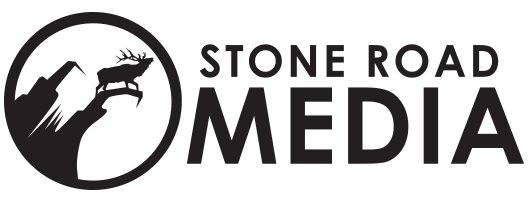Outdoor Internet Marketing │ Maximizing Your Digital Media
Outdoor Internet Marketing │ Maximizing Your Digital Media
By Jeremy Flinn, CMO Stone Road Media
Digital media has been an extremely hot topic lately in the outdoor industry. The writing is on the wall with TV, in just a few years TV has begun to fade in engagement. The fading traditional marketing method has gave way to unbelievable growth in the digital media sector. From original digital content to repurposed TV shows, content on the internet is reaching more people than ever. Why? With the hectic lifestyles of today’s society, having the ability to watch content when you want, where you want is extremely critical. But most companies are not utilizing digital content to its fullest, in fact, many are completely wasting the content.
I’m sure the latter seems quite impossible to you, but if you’re only reaching a few thousand views on YouTube you are definitely wasting the content. Content is king. If you are only utilizing content on one platform, especially if it’s not your website, you are missing the mark. The key to successful digital media is reach. The internet allows a smart digital marketer to syndicate content across many platforms in order to maximize impressions and engagement. No that doesn’t just mean Facebook and Twitter, it means multiple social media platforms, content syndication sites, and in our industry forums. Hunting, fishing, and shooting forums are extremely underutilized as a tool to gain valuable SEO and targeted reach.
What we have discussed so far is for outdoor industry video producers, but what about manufacturers? Sure, you likely have some internal digital content that can be syndicated to the masses. But what about all the endorsements and sponsored shows that you invest thousands of dollars into each year? You aren’t only investing in the personalities, but the content they produce. That content would not exist if it wasn’t for your contribution. Where am I going with this? You need to access that media to maximize your own digital presence. I know there are timeline restrictions on media broadcast to major TV networks like Outdoor Channel or Sportsman Channel, but there are plenty shows and/or “B-roll” that is very accessible and available to syndicate. The fact is that most just don’t ask producers or even know what to ask for. Step one is getting your hands on the content. That’s honestly the easiest part. Step two is knowing what to do with it. From publishing to syndication platforms, there is so much work behind getting the deserving reach out of quality digital media.
This content is not only entertaining, it’s most likely informational and can be incredibly persuasive in a customer deciding whether to buy your product. Why not use the content to its fullest. Odds are you won’t have exclusive access to it, but who cares. The goal is to get it out to as many people who are potential customers as possible. You can only control what you can control, and this is important when discussing digital media. If you have the digital media in your possession, you can ensure it reaches the people you want too. However, if you rely on someone else to get it out there who is not on your team or hired to complete your goal, then there is nothing you can do.
As you begin to think about your 2016 marketing strategy for hunting, fishing, and shooting, what are your plans for digital media? Do you have any? Can you get some from your investments? If any of these become “yes,” then the bigger question is “now what do you do with it?”
For more information on Stone Road Media’s digital media assistance, contact us today at info@stoneroadmedia.com.
